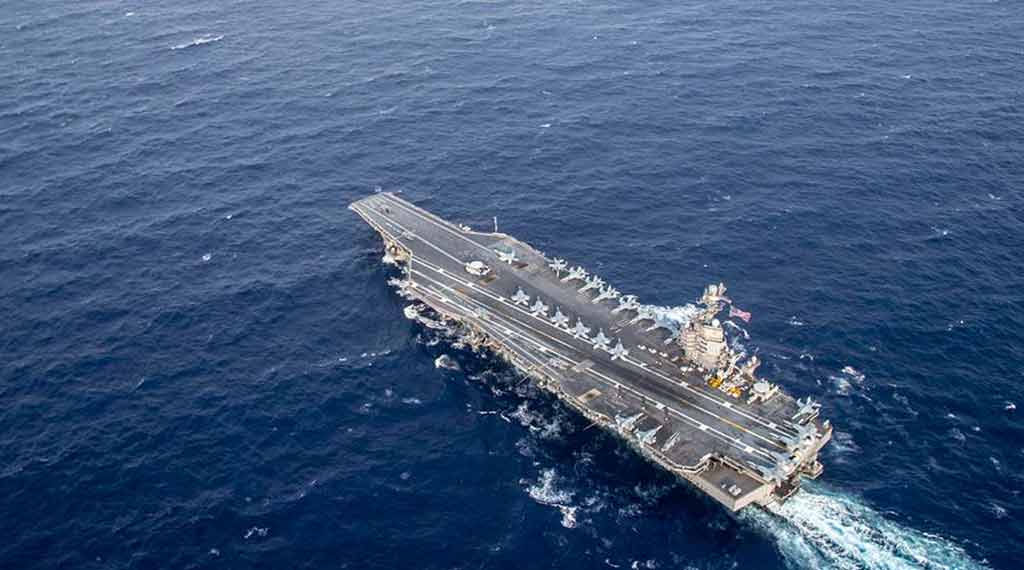Inside the US Navy’s Ford-class aircraft carrier delays: A $120 billion problem

The Ford-class aircraft carriers face significant delays due to supply chain disruptions and challenges integrating new technologies. The Navy’s third Ford-class carrier, USS Enterprise (CVN-80), is expected by 2030.
-Admiral Gilday admitted that overloading the Ford class with 23 new technologies added excessive risk, slowing production and pushing costs higher.
-The program, now costing $120 billion, is plagued by reliability issues with systems like the electromagnetic aircraft launch system (EMALS).
-In addition to technological hurdles, the pandemic has exacerbated supply chain delays.
Future of U.S. Navy Ford-Class Carriers in Question Amid Delays and Rising Costs
Since their inception, the Ford-Class aircraft carriers have experienced delays. The U.S. Navy’s newest aircraft carrier class faces delays that could delay future ship deliveries into the next decade.
As detailed in a thorough review ordered by Navy Secretary Carlos Del Toro earlier this year, supply chain issues and other lingering consequences of the pandemic are to blame. Further, as the Navy’s newest carriers, Ford-class ships incorporate a wide array of untested technologies. The challenge of successfully integrating these systems is another factor pushing back the Ford class’s introduction to service.
The third Ford-class carrier planned for construction – the USS Enterprise (CVN-80) – is planned to be delivered to the service in 2030 at the latest.
Ford-Class: Too Much Too Soon?
In 2011, Chief of Naval Operations Adm. Mike Gilday admitted that the Navy might have been overly ambitious when designing the Ford class, cramming the vessels with a number of new and uncharted systems.
“We had 23 new technologies on that ship, which quite frankly increased the risk … of delivery on time and cost right from the get-go.” Gilday said, adding that “we really shouldn’t introduce more than maybe one or two new technologies on any complex platform like that in order to make sure that we keep risk at a manageable level.”
The Ford class’s electromagnetic aircraft launch system, or EMALS, is perhaps its most recognizable new technology. A departure from the steam-operated Nimitz-class carriers, this system promises higher sortie generation rates, among other improvements. However, in 2020 EMALS’ reliability numbers were running far below expectations. In addition to EMALS, issues surrounding the Ford’s deflectors and Advanced Arresting Gear have also prolonged the class’s timely introduction to service.
Too High a Cost for these Aircraft Carriers?
Equipped with all these cutting-edge technologies, the Ford class is exorbitantly expensive. Each ship in the series costs $13 billion to produce and maintain. By 2023, the program had cost the Navy roughly $120 billion, which is about $40 billion more than the initial cost projection.
The class requires more than 5,000 shipbuilders to work an estimated 49 million hours to build each ship, according to a video published by Business Insider last year. The new technologies on board the ships certainly drive up these costs. For instance, researching and testing the EMALS cost $1 billion dollars alone, in addition to the system’s $670 million installation.
Supply Chain Nightmare?
As mentioned earlier, supply chain issues are also playing a role in the Ford class’s late delivery. The president of Huntington Ingalls noted that delays to a number of specific parts are to blame. The Navy’s Columbia-class and Virginia-class Block IV submarines are also suffering from supply chain issues.
“The appearance of U.S. Department of Defense (DoD) visual information does not imply or constitute DoD endorsement.”
- US Stands Up New Drone Strike Force in the Middle East - December 9, 2025
- Has Russia Finally Sold its Su-35s to Iran? - December 2, 2025
- Iran’s Growing Missile Arsenal Is a Challenge for Israel - November 18, 2025
